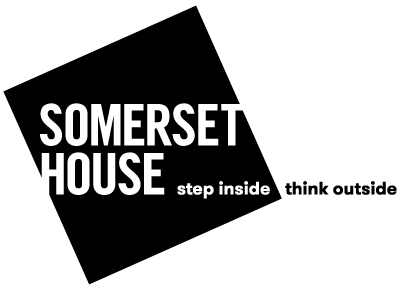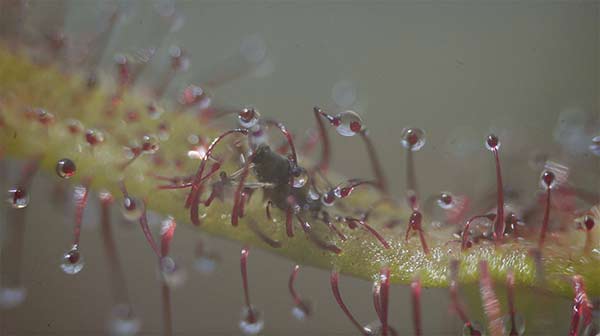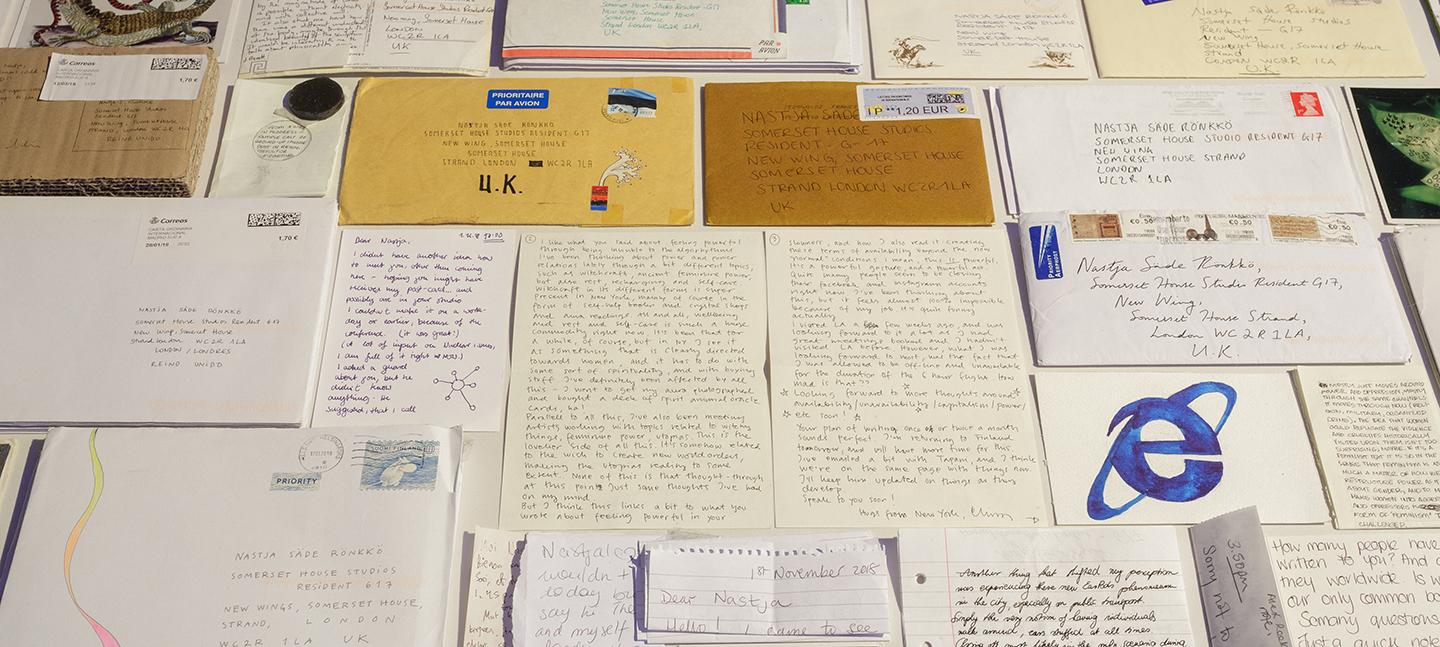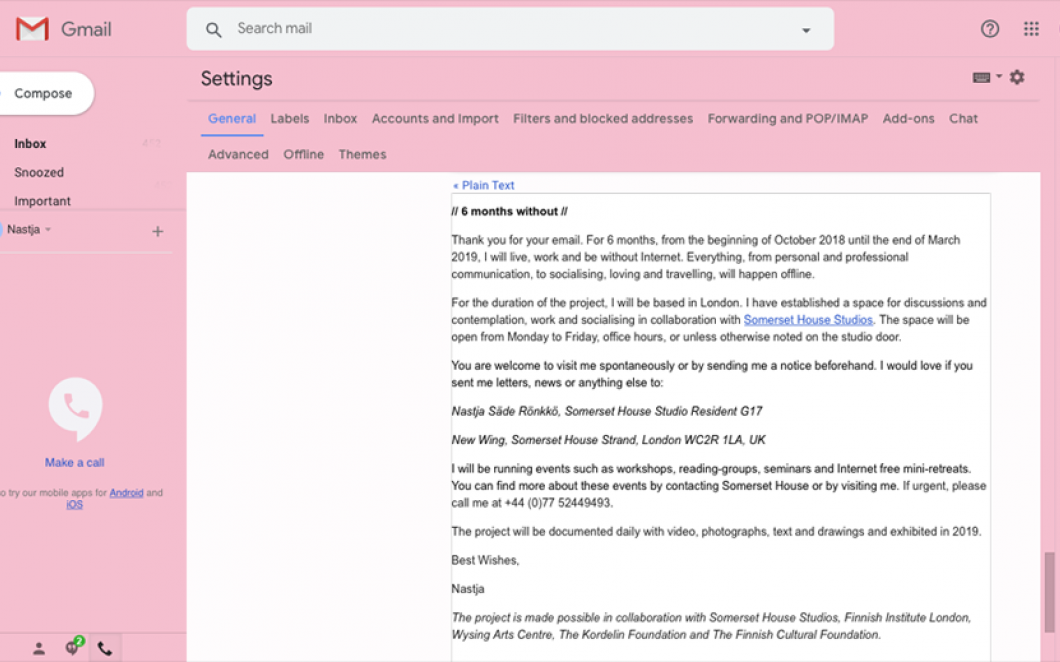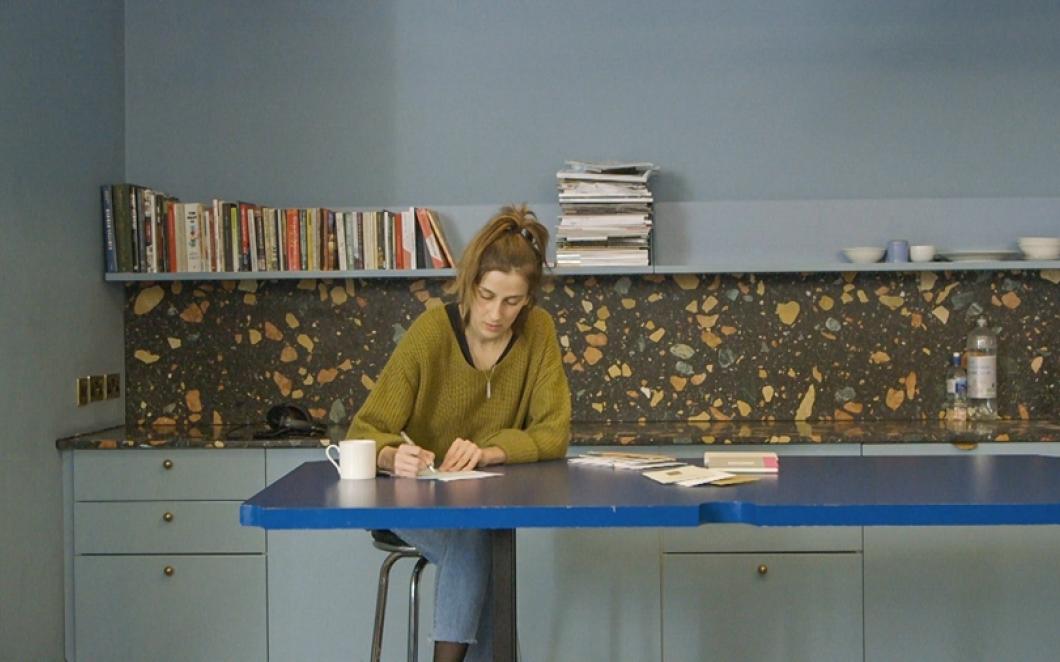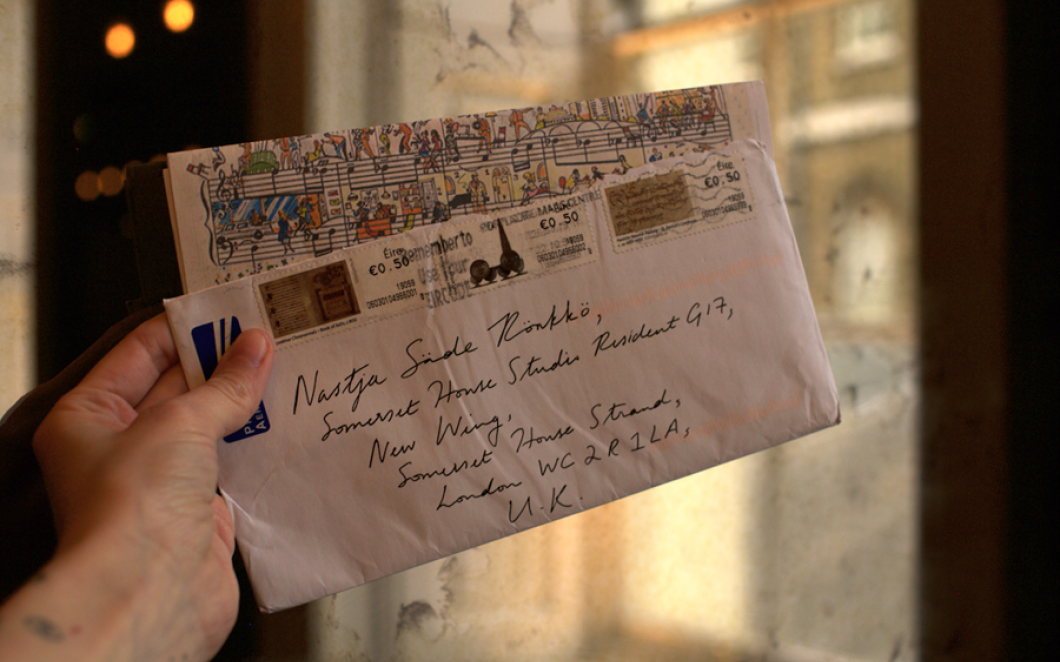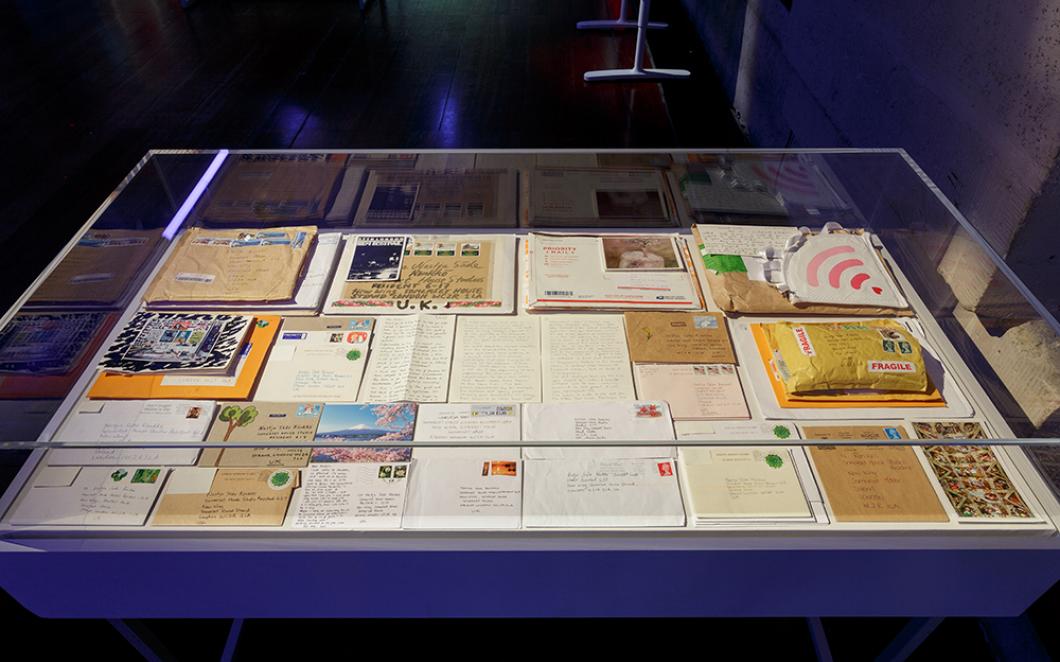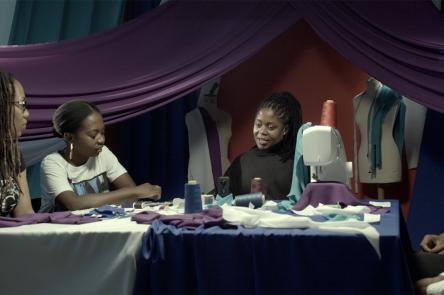Nastja Säde Rönkkö, an interdisciplinary artist from Finland, spent six months without access to the internet to study the effects of offline existence.
Based in Somerset House Studios, Rönkkö swapped emails for letter writing, likes and comments for a series of seminars, and documented her experience through video, photography and text. 6 Months Without – the culmination of Rönkkö's offline residency – is now showing as part of 24/7: A Wake-up Call for our Non-Stop World, a group exhibition exploring the non-stop rhythms of modern living.
In this interview, Rönkkö discusses the artistic and environmental motivation behind her project, epistolary joy and turning experience into art.
On your website, Ellen Mara de Wachter writes that, “Far from constituting an abdication from any kind of contemporary social contract, 6 Months Without generated a network of meaningful relationships across the world.” I’m interested in your positioning of the project as an act of engagement as opposed to withdrawal. Can you say more about this?
During the six months I had an out of office auto reply in my email, briefly explaining the outline of the project, as well as its wider context. The email also had my studio address at Somerset House and the times I would be in it, encouraging people to visit me or to send letters. The response was overwhelming; I got hundreds of letters from all over the world. The letters were from strangers as well as from friends and family. I think the idea of being connected to each other in other ways than social media, or instant online connection, clearly touched something in people. With some people we exchanged only one or two letters but with others we actively wrote to each other for six months. Another way to be engaged was this seminar programme we were running, inviting people to talk about everything from the feminist internet to the enormous environmental impact of technology. So there were multiple layers of engagement with different people, communities and subjects. Just none of them happened online.
It was also important to realise the project in London, in a big city. I didn’t want it to become some kind of offline retreat where I would go into the woods and close myself off from everything and everyone for half a year. That wasn’t interesting to me. The interesting part was trying to find alternative ways to engage with different areas of our society while being offline.
